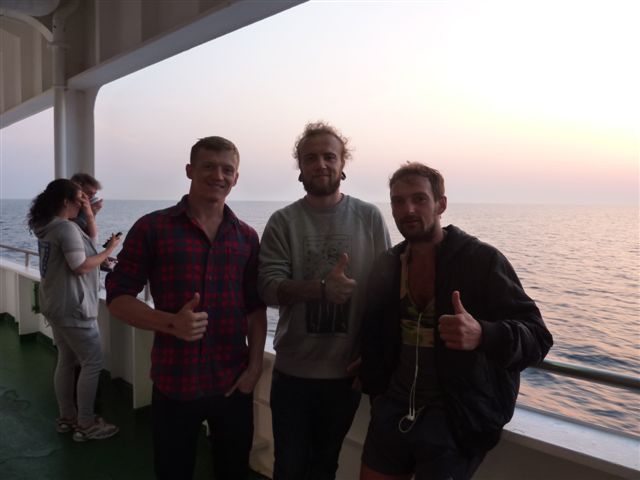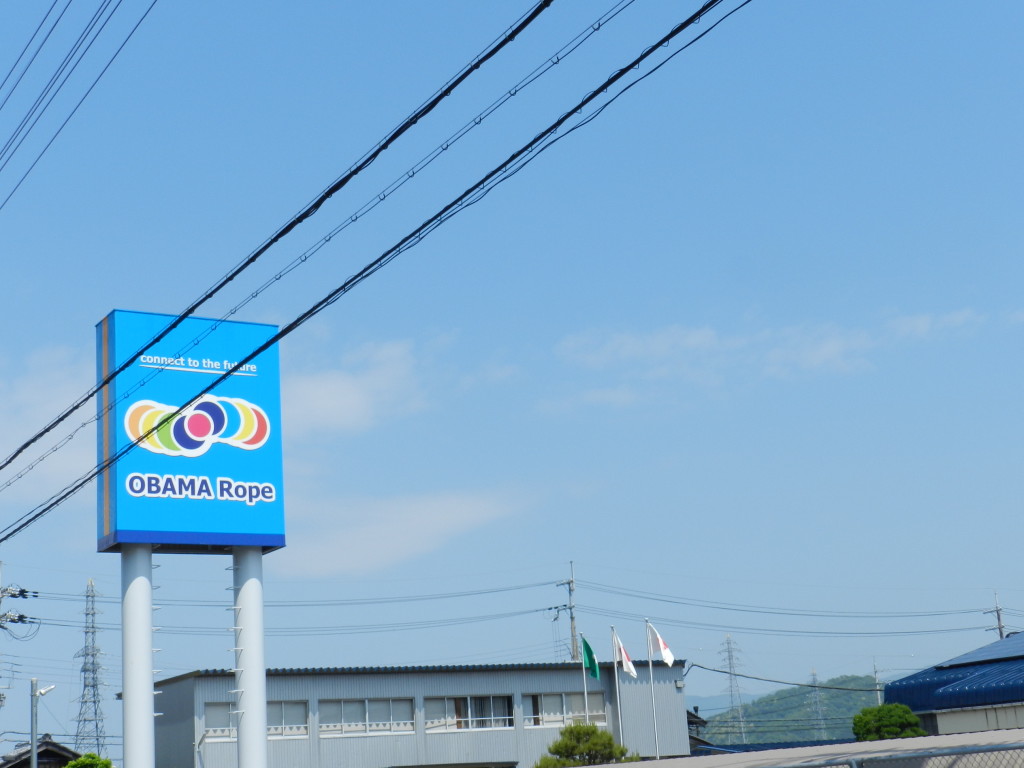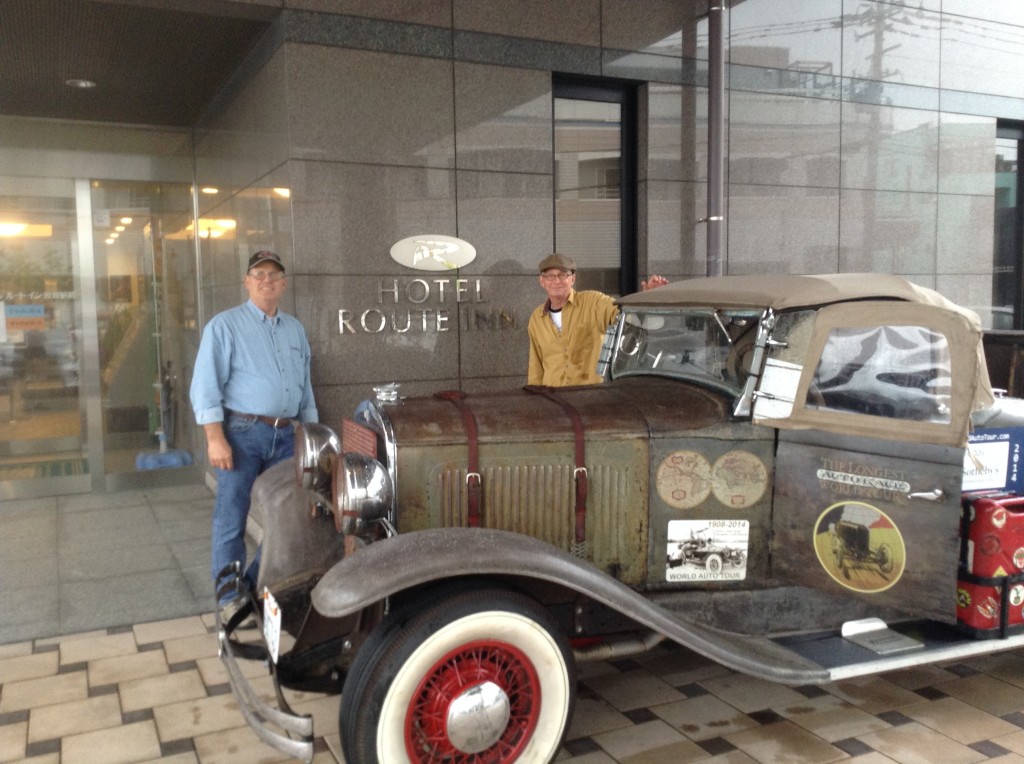We’ve completed the ferry trip from Sakaiminota, Japan to Vladivostok, and I think we all now have a better appreciation for some of what the original 1908 racers must have felt during their ocean voyages with their cars from Tsuruga to Vladivostok. The ferry ride was very interesting, but we’re ready to get moving again!
On Saturday, since we couldn’t board the ferry until late afternoon, we spent the morning visiting the Mizuki District in Sakaiminota, which features dozens of anime monster statues and other related artwork. Here’s an example of one of the statues we saw:
I caught my thumb in the door of the taxi on the drive over, which necessitated the application of this nifty Hello Kitty bandage that acted as a sort of ice pack to keep the swelling down:
After our last excellent Japanese lunch at a family-owned restaurant near our hotel, we headed to the ferry terminal for the DBS Cruise Ferry that would take us and the cars to Vladivostok via Donghae, Korea. Here’s a picture of the ferry:
And here’s what the cars looked like after they were loaded on the ferry:
The room we shared on the boat is pictured below; the room holds eight, but only the four of us were in there, giving us a bit of extra room. It was also nice that no one had to crawl into an upper bunk!
The food on the ferry was excellent! We ate both buffet meals in a dining room (mostly Korean food at the bargain prices of $10 for dinner and $7 for lunch). We also had some ala carte meals and beer in a bar on a lower deck:
Most of the people heading from Japan to Korea were very fit Koreans who had been visiting Japan on either a biking trip (complete with bicycles) or on a combined hiking and shopping trip. Hiking and shopping — my two favorite sports combined into one trip; it sounded like heaven to me!
We got off to a bit of a late start on Saturday evening because the ramp for loading the cars wasn’t working right, but we arrived on schedule in Korea Sunday morning, about 9 a.m. We got off the ferry and stretched our legs for a couple of hours before reboarding. The rather sedate, mostly middle-aged fitness freaks from the previous day had been replaced by a younger, more boisterous Russian crowd carrying armloads of bags and boxes from a Korean shopping spree!
Luke made some Russian friends on the ferry; one of them is Ilya Kupryashkin, a university professor in Vladivosktok. He’s on the left in the photo below:
After another evening on the ferry (with more delicious cuisine and beer), we arrived in Vladivostok about 3pm on Monday. Here’s the ferry terminal at Vladivostok — it’s even more impressive inside:
It took us about another hour to get off the ferry, but after that we breezed through immigration, customs, and changing dollars to rubles. Our guide, Svetlana Sen, and the local Mir point of contact, Veronika Bogach, met us after we cleared immigration and customs and, after some additional paperwork for the cars, Svetlana took us to our hotel, which turned out to be only a few hundred meters from the ferry.
And what a beautiful hotel this is! It’s the Hotel Hyundai, considered by many to be the nicest hotel in Vladivostok, and I would agree. Here’s the view of Golden Horn Bay from my room on the 9th floor:
Tonight we had an outstanding meal at Palau Fish, a restaurant recommended by Svetlana that was a very close walk from the hotel.
Tomorrow we’re planning a walking tour of the waterfront and then around 3pm we’ll go with Svetlana to get the cars through customs, although Svetlana will be the one doing all the work!



















